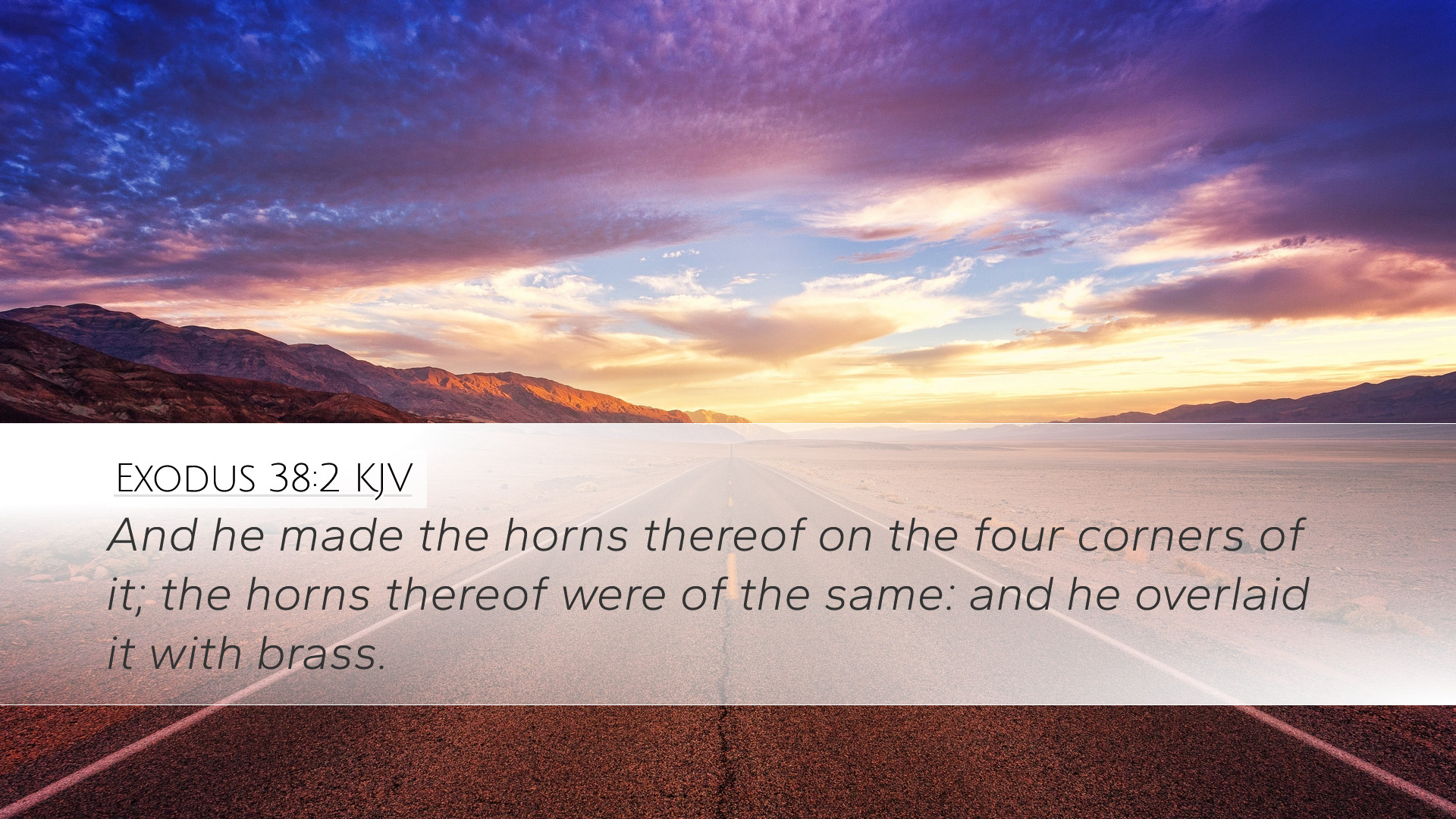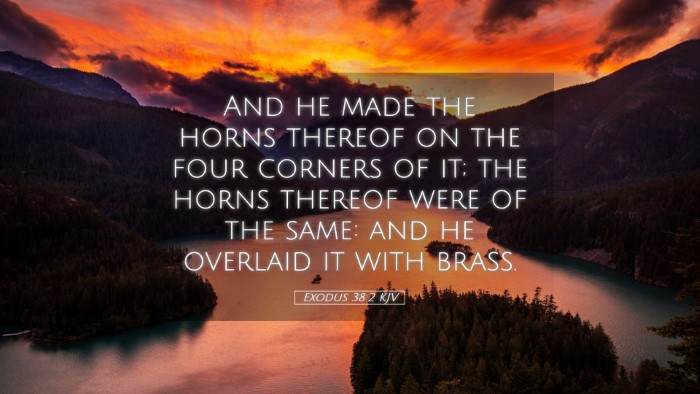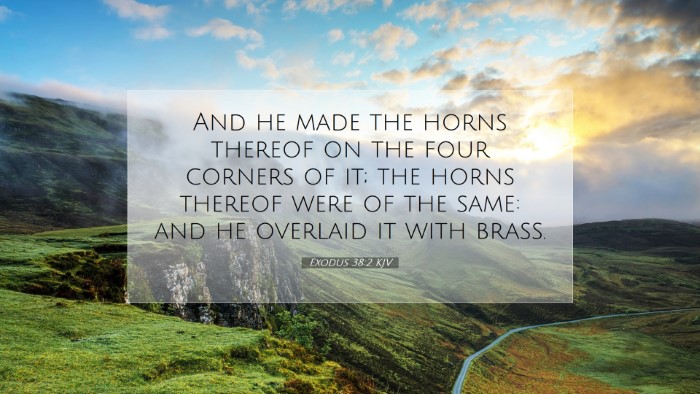Commentary on Exodus 38:2
Exodus 38:2 states: "And he made the altar of burnt offering of shittim wood: five cubits was the length thereof, and five cubits the breadth thereof; it was a square; and three cubits the height thereof."
Introduction
In Exodus 38:2, we encounter the construction of the altar of burnt offering, which plays a crucial role in the tabernacle's sacrificial system. This verse encapsulates the simplicity and significance of the altar, symbolizing the meeting place between God and His people. Drawing from various public domain commentaries, we will explore the construction, dimensions, materials, and theological implications of this altar.
Construction and Dimensions
Matthew Henry elucidates that the altar's dimensions—five cubits long, five cubits wide, and three cubits high—demonstrate its adequacy for the sacrifices that were to take place. The altar's square shape symbolizes stability and completeness, inviting offerings from all directions, reflecting God’s openness to receive worship from different tribes (Henry).
Albert Barnes underscores the importance of specificity in the construction details, suggesting that such precise instructions reflect the gravity and holiness associated with sacrificial rites. He notes that the cubit was an approximate measure, often varying, yet here used to impart the altar's intended purpose.
Materials Used
Adam Clarke highlights the choice of materials, specifically shittim wood, which is believed to refer to acacia—a wood that is known for its durability and resistance to decay. This choice is emblematic of the enduring nature of God’s covenant with His people. The use of wood also signifies the human aspect of the sacrificial system, where the lifeblood of animals represented lives given for atonement (Clarke).
- Shittim Wood: Symbolizes the preciousness of the sacrifices.
- Durable Materials: Reflects the everlasting covenant and divine promise to Israel.
Theological Significance
The altar of burnt offering serves as a profound symbol in the broader context of the Exodus narrative and Israel's relationship with God. As noted by Matthew Henry, the altar was central to the sacrificial system, ensuring that sin was atoned for, thus emphasizing God’s holiness and humanity’s need for reconciliation.
Albert Barnes reinforces this by suggesting that the altar represents the need for a mediator between God and man. This foreshadows the ultimate sacrifice in Christ, who fulfills the role of both priest and victim (Barnes).
Moreover, Clarke points out that the act of offering on the altar requires intentionality and devotion. The altar is not merely a structure; it is a place where worshippers engage with the divine and acknowledge their dependence on God's mercy.
Practical Applications for Today
In light of Exodus 38:2, contemporary readers—including pastors, theologians, and students—can derive several key applications:
- Understanding Sacrifice: The altar reminds believers of the importance of sacrifice in their worship, not just in ritual but in daily life, as we present our bodies as living sacrifices (Romans 12:1).
- God’s Invitation to Worship: Just as the altar was open for sacrifices from all directions, so too is God inviting all to come to Him for forgiveness and grace.
- Reflection on Holiness: The altar’s specifications remind us of God’s holiness and the need for reverence in His presence. It is a call for purity, as worship should stem from a heart aligned with God's will.
Conclusion
Exodus 38:2 serves as a vital reminder of the centrality of sacrifice in the life of faith. The altar of burnt offering encapsulates God's desire to engage with humanity through ceremonial acts of worship, while also prefiguring the ultimate sacrifice Jesus made. This foundational understanding of the altar can enrich theological discourse and personal worship practices, fostering a deeper connection with the God who seeks relationship with His people.


